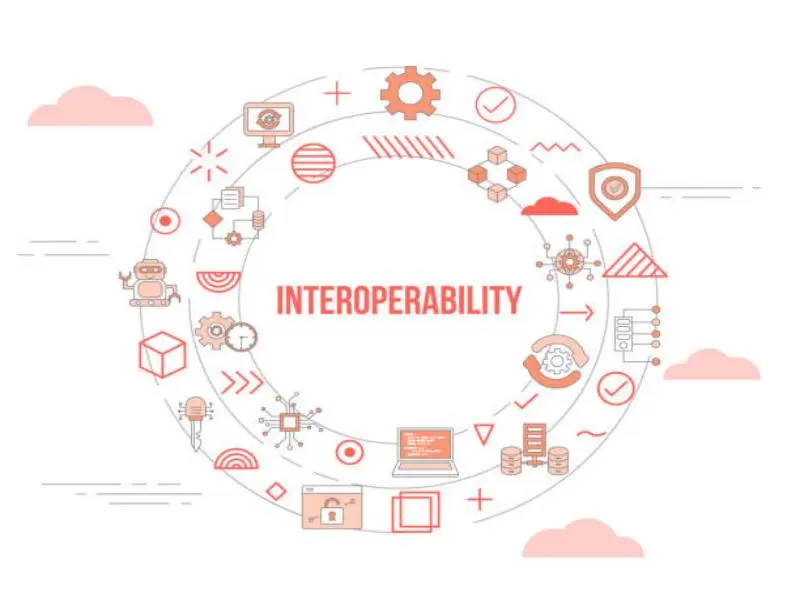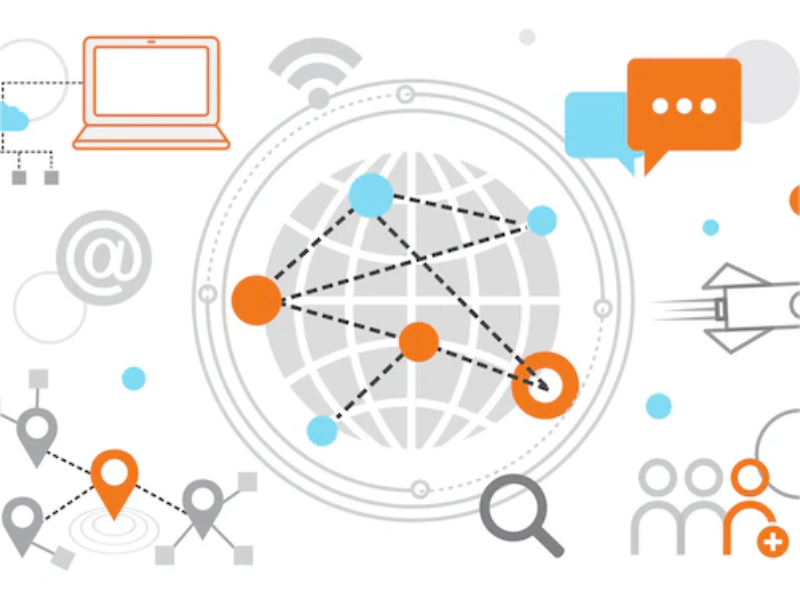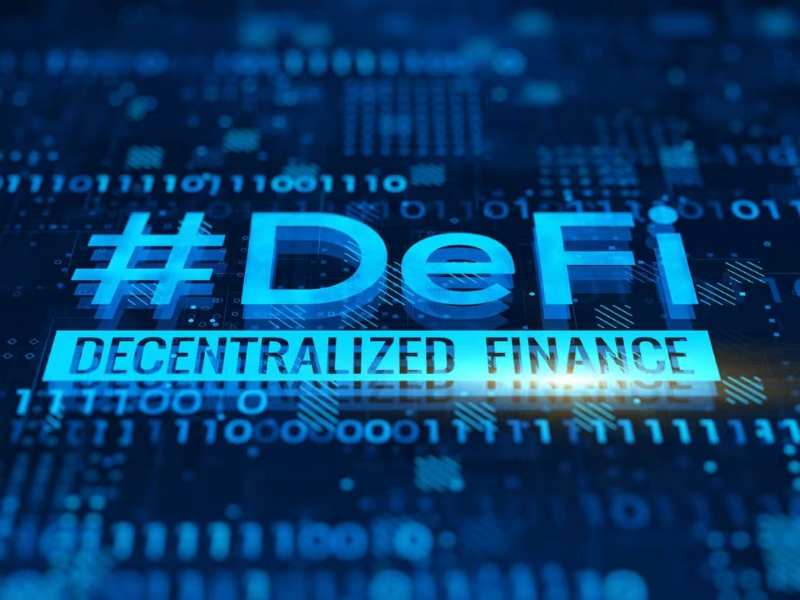- Blockchain interoperability is the ability of different blockchain networks to communicate and exchange data and value, which is crucial for creating complex, cross-platform applications and enhancing market liquidity.
- It is achieved through specialised protocols and technologies which facilitate direct communication and asset transfer between blockchains.
Interoperability has become one of the most critical aspects of modern blockchain development. It refers to the ability of different blockchain networks to seamlessly communicate, share data, and conduct transactions with one another. This capability eliminates the silos that have traditionally defined blockchain ecosystems, paving the way for a more interconnected and efficient decentralized landscape.
Also read: 3 primary types of interoperability
Also read: What is interoperability in cloud computing?
- What is blockchain interoperability
- The importance of interoperability in blockchain
- Challenges in achieving blockchain interoperability
- Solutions for blockchain interoperability
- Applications of blockchain interoperability
- The Role of Standardization in Blockchain Interoperability
- Future trends in blockchain interoperability
- The role of interoperability in shaping blockchain’s future
- FAQs: What is blockchain interoperability and how does it work?
What is blockchain interoperability
refers to the ability of different blockchain networks to interact, share data, and conduct transactions seamlessly. It eliminates the barriers that traditionally isolate blockchains, allowing them to work together efficiently. Interoperability encompasses a range of capabilities, including transferring assets, executing cross-chain smart contracts, and sharing information securely between multiple blockchain platforms.
This functionality is essential for creating a unified blockchain ecosystem. For instance, it enables users to move tokens or digital assets from one blockchain to another without intermediaries. Developers can also leverage the strengths of different blockchains—such as Ethereum’s smart contract capabilities and Solana’s high-speed transactions—to build more robust decentralized applications (dApps).
Interoperability ensures that blockchain networks are no longer isolated systems but interconnected components of a larger digital infrastructure. By enabling cross-chain communication, it fosters innovation, enhances scalability, and expands the practical applications of blockchain technology across various industries, including finance, healthcare, supply chain, and gaming.
Also read: What does protocol mean in networking?
The importance of interoperability in blockchain
Interoperability is not just a technical feature—it’s an enabler of growth and innovation in the blockchain space. Here’s why it’s essential:
1. Enhanced Functionality
Interoperability allows developers to leverage the strengths of multiple blockchains simultaneously. For instance, they can use Ethereum’s smart contract capabilities while benefiting from Solana’s high transaction speed. This opens the door to more versatile applications.
2. Increased Adoption
A seamless user experience across platforms is critical for attracting and retaining users. Interoperability reduces friction for end-users, encouraging more widespread adoption of blockchain technologies.
3. Innovation Facilitation
By enabling data sharing and cross-chain functionality, interoperability provides developers with the tools to create sophisticated decentralized applications (dApps) that go beyond the capabilities of a single blockchain.
4. Economic Efficiency
Interoperability minimizes redundancy and reduces the need for intermediaries. This streamlines processes, lowers costs, and improves transaction speeds.
Also read: Hardware vs. Software vs. Firmware: How do they differ?

Challenges in achieving blockchain interoperability
While the potential benefits of blockchain interoperability are immense, realizing this vision is not without challenges. Some of the major hurdles include:
1. Technical Differences: Blockchains often have varying architectures, consensus mechanisms (like Proof of Work vs. Proof of Stake), and programming languages. Bridging these differences requires sophisticated solutions that ensure compatibility without compromising performance.
2. Security Risks: Connecting multiple blockchains increases the attack surface, making cross-chain interactions vulnerable to exploits. Security breaches in one blockchain could potentially impact interconnected systems.
3. Lack of Standards: The absence of universal standards for blockchain interoperability complicates the development of cross-chain solutions. This fragmentation makes it challenging for developers to build tools that work seamlessly across networks.
4. Regulatory Hurdles: Blockchains operate across jurisdictions with varying regulatory frameworks. Ensuring compliance while maintaining interoperability adds complexity to the development process.

Solutions for blockchain interoperability
Despite these challenges, the industry has made significant progress in developing solutions that enable interoperability. Key approaches include:
1. Cross-Chain Bridges: Cross-chain bridges are platforms that facilitate asset and data transfers between blockchains. For example, the Wormhole bridge enables interactions between Solana and Ethereum, making it possible to move tokens seamlessly between the two networks.
2. Interoperability Protocols: Protocols like the Inter-Blockchain Communication (IBC) protocol, used by Cosmos, establish standards for communication between blockchains. IBC allows independent blockchains to exchange information and value securely.
3. Oracles: Oracles like Chainlink provide real-world data to smart contracts, enabling them to interact with off-chain systems and other blockchains. They play a vital role in enabling interoperability by serving as a trusted bridge between networks.
4. Sidechains: Sidechains are separate blockchains that operate alongside a parent blockchain. They allow for asset transfers and other interactions, maintaining interoperability while reducing congestion on the main chain.
Interoperability is not just about connecting blockchains; it’s about creating a unified ecosystem where each network complements the others, unlocking the full potential of decentralization.
Vitalik Buterin, Co-Founder of Ethereum
Applications of blockchain interoperability
Interoperability has far-reaching implications across industries, enabling innovative use cases that leverage multiple blockchains simultaneously:
1. DeFi (Decentralized Finance)
In DeFi, interoperability enables users to move assets across different platforms, optimizing yield farming, staking, and liquidity provision. For example, a user could stake Ethereum on one platform and use the rewards on another blockchain’s lending protocol.
2. Supply Chain
Interoperable blockchains enhance transparency and efficiency in supply chains by allowing data sharing between different networks. This ensures traceability and accountability across all stakeholders.
3. Gaming and NFTs
In gaming, interoperability allows assets like in-game items and NFTs to be transferred across different games or platforms, creating a more immersive and interconnected experience.
4. Healthcare
Interoperable blockchains can facilitate secure data sharing between hospitals, labs, and research institutions, improving patient care and fostering collaboration in medical research.

The Role of Standardization in Blockchain Interoperability
Standardization plays a pivotal role in achieving interoperability at scale, acting as the foundation for seamless cross-chain communication and collaboration. By establishing common communication protocols, uniform data formats, and compliance standards, standardization ensures that different blockchain networks can interact efficiently without technical or procedural barriers. It addresses the fragmentation within the blockchain ecosystem, enabling developers and businesses to build solutions that are compatible across various platforms.
Organizations such as the Enterprise Ethereum Alliance (EEA) and the World Economic Forum (WEF) are at the forefront of creating standardized frameworks for blockchain interoperability. These frameworks aim to balance technical innovation with critical aspects like security, scalability, and regulatory compliance, ensuring that blockchain networks can work cohesively without compromising their individual strengths.
The benefits of standardization extend beyond technical compatibility. It builds confidence among stakeholders—developers, businesses, and end-users—by providing a reliable foundation for interoperable solutions. For developers, it simplifies the process of creating cross-chain applications. For businesses, it lowers costs and risks associated with integrating multiple blockchain networks. For end-users, it delivers a seamless and consistent experience across platforms.
As blockchain technology continues to evolve, standardization will remain an essential factor in fostering interoperability, accelerating innovation, and driving the widespread adoption of blockchain solutions across industries.
Also read: Cross-chain interoperability: The key to blockchain’s future
Also read: What is communications interoperability and why is it important?
Future trends in blockchain interoperability
The future of blockchain interoperability holds immense promise, with ongoing advancements poised to redefine the industry. Key trends include:
1. Universal Interoperability Frameworks
Efforts to create frameworks that enable seamless interactions across all blockchains, regardless of architecture or consensus mechanisms, are gaining traction.
2. Integration with Traditional Systems
Interoperability is expanding beyond blockchains, enabling integration with traditional financial systems, IoT devices, and enterprise databases. This bridges the gap between decentralized and centralized systems.
3. Enhanced Security
Future interoperability solutions will prioritize advanced security measures, such as zero-knowledge proofs and decentralized identity systems, to mitigate risks associated with cross-chain interactions.
4. Regulatory Harmonization
As blockchain adoption grows, international efforts to align regulatory frameworks will facilitate smoother interoperability across jurisdictions, unlocking new opportunities for global collaboration.
The future of blockchain lies in interoperability. Only through seamless communication between chains can we achieve a truly decentralized and scalable Web3 ecosystem.
Gavin Wood, Founder of Polkadot
The role of interoperability in shaping blockchain’s future
Interoperability is a cornerstone of blockchain technology, fostering its growth, adoption, and innovation across industries. By enabling seamless communication between different blockchains, interoperability breaks down silos that have traditionally limited blockchain ecosystems. This capability empowers decentralized applications (dApps), financial systems, and enterprise solutions to function more cohesively, unlocking new levels of efficiency and creativity.
Through interoperability, developers and users can leverage the unique strengths of multiple blockchains simultaneously—combining Ethereum’s smart contracts with Solana’s high-speed transactions, for example. This creates a unified and versatile digital landscape, paving the way for groundbreaking applications in decentralized finance (DeFi), supply chains, gaming, healthcare, and more.
While challenges such as technical discrepancies, security vulnerabilities, and regulatory fragmentation persist, the progress in interoperability solutions is encouraging. Cross-chain bridges, interoperability protocols, and advancements in blockchain standardization are driving the industry closer to a fully interconnected future. These efforts not only enhance blockchain functionality but also build trust among developers, businesses, and end-users.
As blockchain technology continues to revolutionize industries and redefine digital interactions, interoperability will serve as a critical enabler. It is the key to creating a decentralized, collaborative, and efficient ecosystem, ensuring blockchain’s relevance and scalability in an increasingly interconnected world.
FAQs: What is blockchain interoperability and how does it work?
Blockchain interoperability refers to the ability of different blockchain networks to communicate, share data, and execute transactions seamlessly. It enables decentralized applications and assets to operate across multiple blockchain platforms without restrictions.
Interoperability enhances the functionality, efficiency, and scalability of blockchain systems. It allows users and developers to leverage the strengths of different blockchains, fosters innovation, and creates a more unified and accessible blockchain ecosystem.
Key challenges include technical differences between blockchains (e.g., consensus mechanisms and protocols), security risks, lack of universal standards, and regulatory barriers across jurisdictions.
Solutions include cross-chain bridges (e.g., Wormhole), interoperability protocols like the Inter-Blockchain Communication (IBC) protocol, oracles like Chainlink for real-world data integration, and sidechains for seamless interaction with parent chains.
The future includes the development of universal interoperability frameworks, integration with traditional systems, enhanced security measures, and harmonized global regulations. These advancements will help create a fully interconnected and collaborative blockchain ecosystem.

